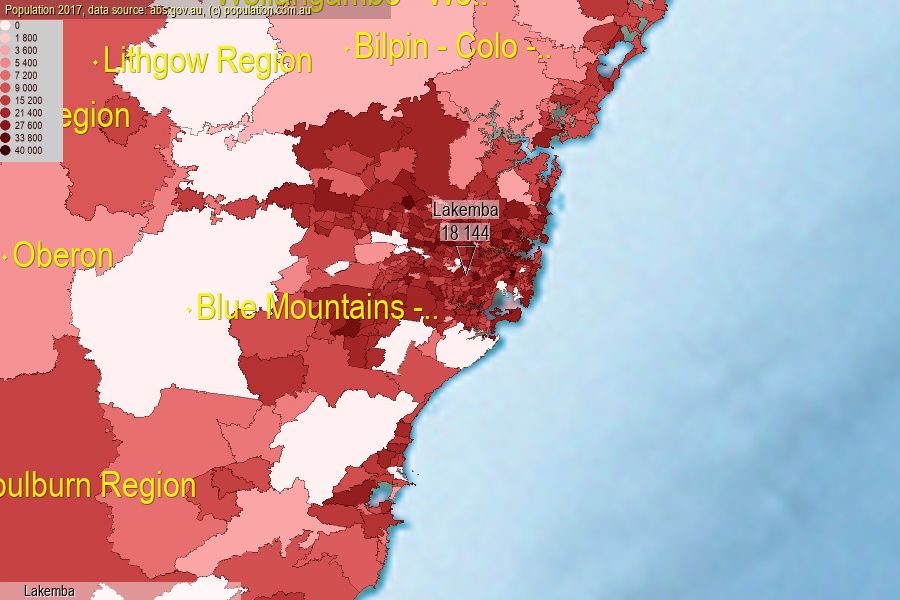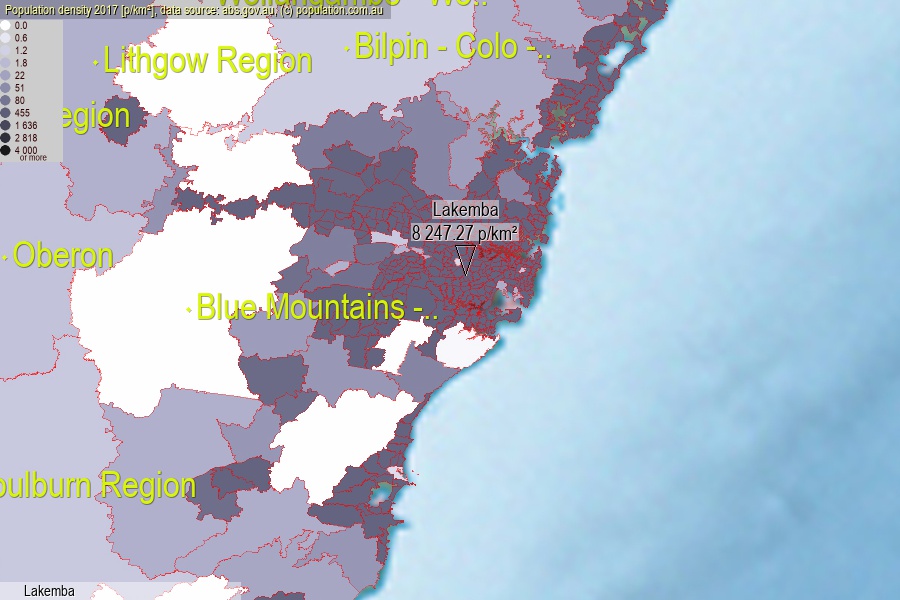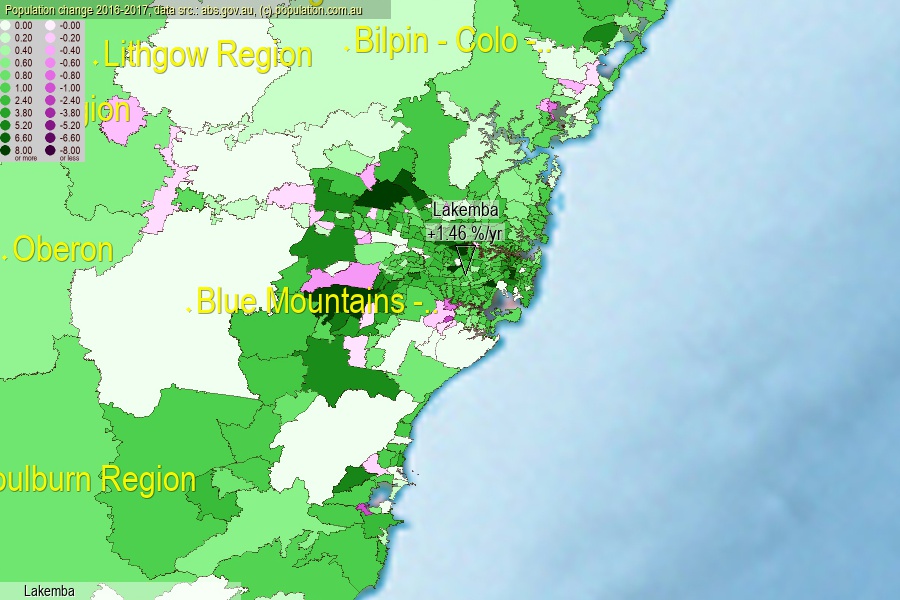 population.com.au
population.com.auLast official estimated population of Lakemba (as Statistical Area Level 2) was 18 144 people (on 2017-06-30)[2]. This was 0.07% of total Australian population and 0.228% of NSW population. Area of Lakemba is 2.20 km², in this year population density was 8 247.27 p/km² . If population growth rate would be same as in period 2016-2017 (+1.46%/yr), Lakemba population in 2025 would be 20 374. [0]



Click to enlarge. Lakemba is located in the center of the images.
Population [people], population density [p./km²] and population change [%/year] [2]
View borders » (new window) [4]
[2001-2002] -0.44 %/Yr.
[2002-2003] -1.11 %/Yr.
[2003-2004] -0.79 %/Yr.
[2004-2005] +0.01 %/Yr.
[2005-2006] +0.58 %/Yr.
[2006-2007] +1.80 %/Yr.
[2007-2008] +3.50 %/Yr.
[2008-2009] +3.32 %/Yr.
[2009-2010] +1.36 %/Yr.
[2010-2011] +0.37 %/Yr.
[2011-2012] +2.25 %/Yr.
[2012-2013] +2.05 %/Yr.
[2013-2014] +1.47 %/Yr.
[2014-2015] +1.49 %/Yr.
[2015-2016] +0.79 %/Yr.
[2016-2017] +1.46 %/Yr.
[0] Calculated with linear interpolation from officially estimated population
[1] Read more about SA2 and Australian Statistical Geography Standard (ASGS) on abs.gov.au
[2] Population data from Australian Bureau of Statistics (Population and density: 2017; change: 2016-2017)
[3] Digital Boundaries: Australian Statistical Geography Standard (ASGS) 2016.
[4] Border coordinates are simplifyed using Ramer-Douglas-Peucker algorithm.